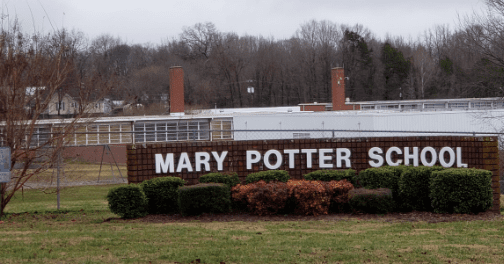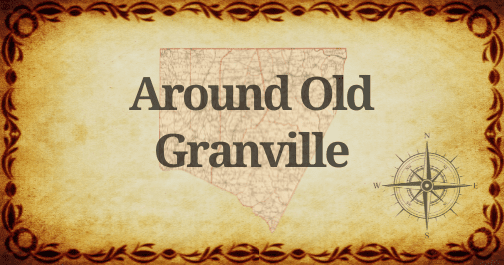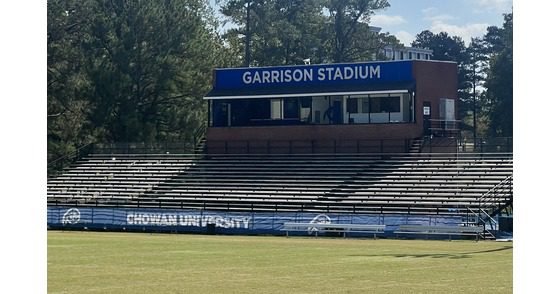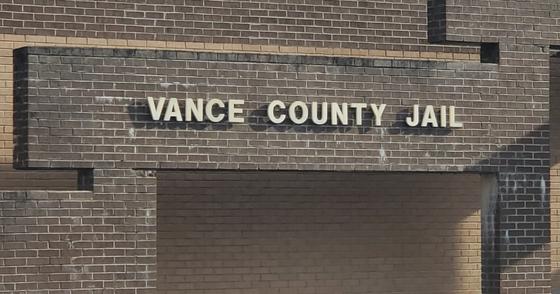Placing historical markers along prominent roadways is one way to make sure that they’ll be seen by lots of people driving by, but it also means that they run the risk of being struck by a wayward vehicle or even by the occasional grass mowing crews keeping the shoulders tidy.
Vance County has 16 historical markers located within its boundaries – seven of them honor individuals and the other nine are for particular events, towns and structures.
Pace and WIZS’s Bill Harris continued their discussion of historical markers with a focus on Vance County on Thursday’s Around Old Granville segment of TownTalk.
There are no fewer than five markers in and around Williamsboro, and Pace said that’s a nod to when the area – now not much more than a crossroads – was a thriving community back in the pre-Revolutionary days of the 1700’s. Williamsborough, as it was known during Colonial times, has its own marker which reads: “Eighteenth century town, named for John Williams, judge, state legislator, congressman, who lived nearby. Old St. John’s Church is here.”
“You wouldn’t know it riding through there today,” Pace said. Except for the fact that the historical markers bring attention to St. John’s Episcopal Church, the oldest frame church building in the state, as well as James Turner, an early governor and senator who lived in nearby.
Another marker remembers the Bingham School, which didn’t stay very long in Williamsboro, but was the first military school, established in 1826.
The marker for Richard Henderson originally had been placed on Norlina Road, across from the former WHNC radio station, but Pace said it was relocated to Satterwhite Point Road, about a mile from where his grave is. Henderson was the founder of Transylvania County in Kentucky and Nashville, TN.
Another Henderson, Leonard Henderson, has a marker, too. He’s who the city is named for, Pace said, but he was also an educator and a member of the first state Supreme Court in the early 1800’s.
The majority of the markers remind passersby of people and places long gone: there’s the Glass House in Kittrell, for example, that had been a destination for wealthy Northerners to escape city winters and enjoy the healing powers the area’s springs. And there’s Kittrell’s Springs, the health resort-turned hospital for Confederate soldiers in the waning days of the Civil War.
And the Confederate cemetery, where 52 soldiers’ graves are located.
But the historical marker that was placed in 2007 recalls a more recent event that has claimed its own place in history: The strike at Harriet-Henderson cotton mill occurred between 1958 and 1961, and Pace said it helped to showcase the South as a place where unions didn’t have traction as in other areas of the country, particularly the Northeast.
And although it’s not the earliest marker to be erected, the marker for John Lederer along N.C. 39 north of Townsville honors a pioneering German explorer who traveled in the area in 1670, with the help of a Native American guide.
Pace said Lederer may very well be the first person of European descent to set foot in this part of the world, but he sort of “fell through the cracks, history wise,” Pace added.
Are there other potential people and places that could be honored with their own historical marker?
Surely, Pace said.
He would consider the Blacknall family’s Continental Plant Co. that shipped strawberry plants all over the world, Greystone Quarry as well as Kerr Lake, which was the largest reservoir east of the Mississippi when U.S. Army Corps of Engineers built between 1947 and 1952.
Find a county-by-county listing of historical markers at https://www.dncr.nc.gov/nc-historical-markers-guide-may-2024/open
Listen back to the entire interview at www.wizs.com.
CLICK PLAY!


















